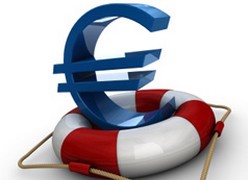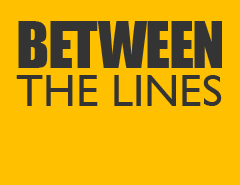It's so comforting to know that the 'lender of last resort' always has its priorities in the right place. On September 22nd, amongst the press releases issued from its headquarters in Washington, the IMF finally released the news that the markets, central banks, governments and the multi faceted worldwide collection of, investors, commentators and journalists had been waiting for with baited breath for months. Naturally to counter a situation so grave, so potentially and economically terminal, that strikes so deep at the core of the global economy takes months to ratify, but finally it's here, ladies and gents we're saved, the IMF iPad app is with us…
As the IMF met last week in Washington to thrash out the latest 'thrash out' there was a slip up that caught many media analysts and market commentators unawares. Just how much money has the IMF actually got? You know like real money, not fractional reserve fiat 'make it up as you go along' currency in any denomination you can think of, but actual reserves provided by 'member' nations? It turns out that the IMF only has $400billion..(actually it has closer to $600billion but under its articles can only lend $400billion).
When announced you can imagine Ms. Lagarde saying it with a stifling cough and blaming it on the Gitanes, "er..$400 bl..cough..next question please". So the saviour of the masters of the universe, the Grand Inquisitor of the markets, the Lord Voldemort of the financial wizards only has enough to rescue Greece's default, then it's all out of spare change..?
So what does the IMF actually do? Here's a quick resume..
The International Monetary Fund was conceived in July 1944 during the United Nations Monetary and Financial Conference. The representatives of 45 governments met in the Mount Washington Hotel in the area of Bretton Woods, New Hampshire, United States, with the delegates to the conference agreeing on a framework for international economic cooperation. The IMF was formally organised on December 27, 1945, when the first 29 countries signed its Articles of Agreement. The statutory purposes of the IMF today are the same as when they were formulated in 1943.
Its stated goal is to stabilise exchange rates and assist the reconstruction of the world’s international payment system. Countries contribute to a pool which can be borrowed from, on a temporary basis, by countries with payment imbalances. The IMF was important when it was first created because it helped the world stabilise the economic system. The IMF works to improve the economies of its member countries. The IMF describes itself as “an organisation of 187 countries (as of July 2010), working to foster global monetary cooperation, secure financial stability, facilitate international trade, promote high employment and sustainable economic growth, and reduce poverty.”
The IMF’s influence in the global economy steadily increased as it accumulated more members. The number of IMF member countries has more than quadrupled from the 44 states involved in its establishment, reflecting in particular the attainment of political independence by many developing countries and more recently the dissolution of the Soviet Union. The expansion of the IMF’s membership, together with the changes in the world economy, have required the IMF to adapt in a variety of ways to continue serving its purposes effectively.
In 2008, faced with a shortfall in revenue, the International Monetary Fund’s executive board agreed to sell part of the IMF’s gold reserves. On April 27, 2008, former IMF Managing Director Dominique Strauss-Kahn welcomed the board’s decision of April 7, 2008, to propose a new framework for the fund, designed to close a projected $400 million budget deficit over the next few years. The budget proposal includes sharp spending cuts of $100 million until 2011 that will include up to 380 staff dismissals.
At the 2009 G-20 London summit, it was decided that the IMF would require additional financial resources to meet prospective needs of its member countries during the ongoing global financial crisis. As part of that decision, the G-20 leaders pledged to increase the IMF’s supplemental cash tenfold to $500 billion, and to allocate to member countries another $250 billion via Special Drawing Rights.
On October 23, 2010, the ministers of finance of G-20, governing most of the IMF member quotas, agreed to reform IMF and shift about 6 percent of the voting shares to major developing nations and countries with emerging markets. As of August 2010 Romania ($13.9 billion), Ukraine ($12.66 billion), Hungary ($11.7 billion), and Greece ($30 billion) are the largest borrowers of the fund.
So now the history lesson is over it's time to concentrate our minds on the serious business and this is very serious. It's the kind of serious that won't mean anything to Jo or Joe 'Six Pack' (that's my nod to political correctness, we've all met women that can drink as well as blokes) but the importance and gravity, given it is in effect potentially ripping up certain strict edicts that the IMF is supposed to adhere to, is stunning.
According to the Dow Jones newswire;
[quote]The International Monetary Fund, looking to assure markets that it has the financial firepower to deal with the deepening problems in Europe and crises elsewhere, is exploring how it can have at least $1.3 trillion in lending power, according to officials involved with the discussions. The IMF currently has about $630 billion in usable resources; about two-thirds of that could be lent under IMF rules. Under the plan being considered, the fund would need to make permanent a $590 billion temporary lending facility that was put in place in response to the 2008 financial crisis. The IMF is also counting on member nations to finally enact a doubling of IMF member country dues, totalling $750 billion, which have already been approved in principle. Approvals by national parliaments are expected in early 2012. The IMF is also weighing whether to sell bonds in private markets on short notice, a move that could bolster its safety net beyond $1.3 trillion. The IMF has never sold bonds of this sort, and the U.S. and Germany among others have resisted such moves out of concern that the IMF would have too much independence from its major shareholders. It’s not clear whether that opposition has lessened with the ongoing global financial turmoil.[/quote]
There are very concerning aspects regarding this announcement, that the IMF 'telegraphed' the global sovereign debt crisis is about to get much worse, by tipping Dow Jones off and it dutifully reporting it is "exploring" ways to double its gross lending power to $1.3 trillion, is not unusual. A slow bleed into analysts' consciousness is a well trodden path to prevent panic.
However, whilst not in itself a 'bad thing' adding this $1.3 trillion to the EFSF's proposed $3 trillion expansion, means global bailout capacity will soon hit $5 trillion. How, why and who gets to pay interest on that monumental sum is the real issue, surely the IMF is not considering issuing its own bonds to pay for this mega bailout facility, has the system really reached this new nadir? Such a move would take the SDR (special drawing rights) one step closer to being an alternative gold-backed reserve currency, and in a stroke dilute the hegemony of the Western axis much to the delight of Russia and China. We do indeed live in interesting times.





